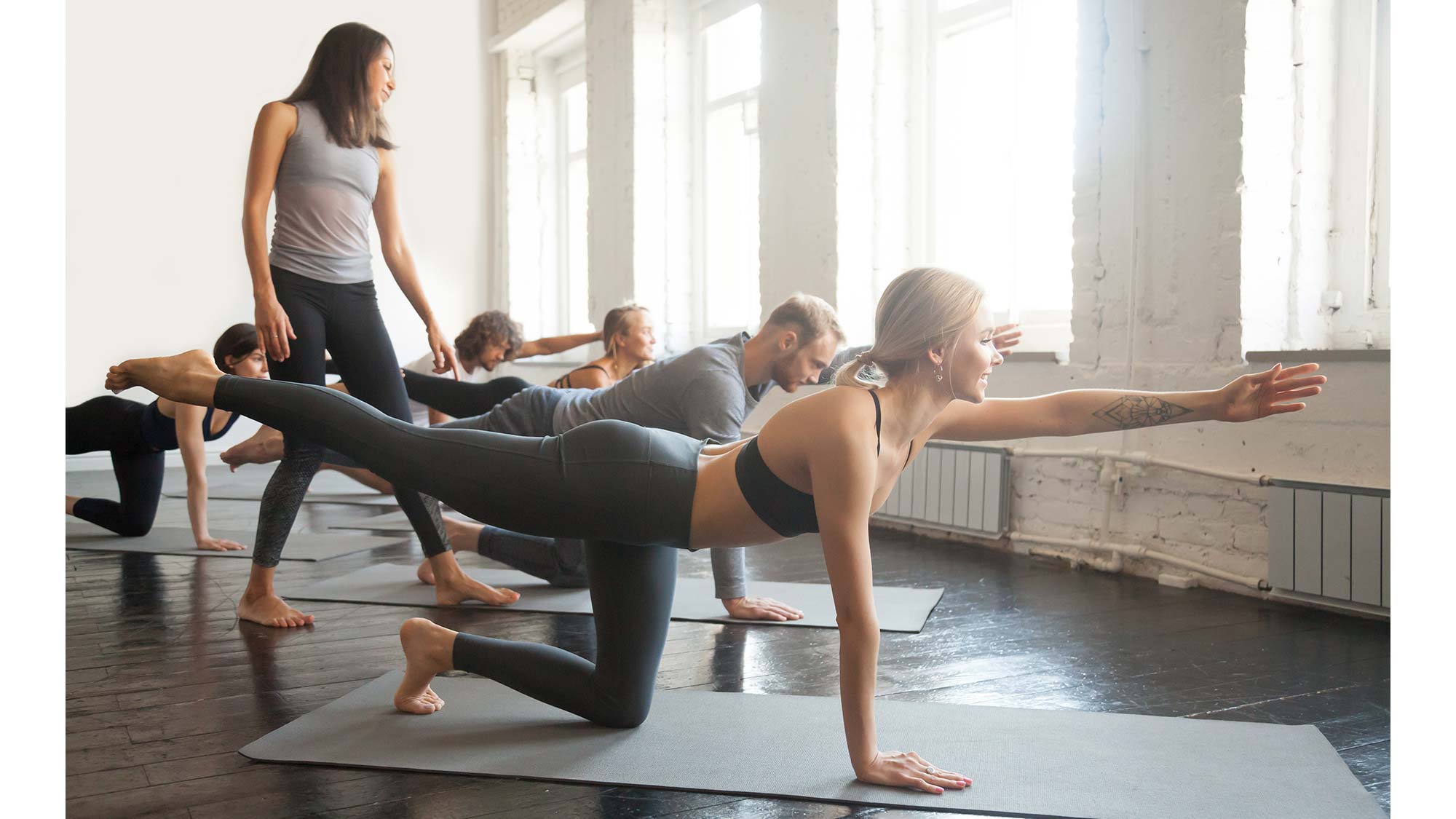3 Hands-Off Assists Every Yoga Teacher Should Try

While physical adjustments are a very direct way to correct your students’ alignment and help them find more opening or release in a posture, they’re also a very personal experience. And because it’s downright impossible to know all of your students’ personal, cultural, and other boundaries when it comes to touch (not to mention the physical limitations that can potentially make your touch injurious), a number of teachers are taking a hands-off approach to adjustments in asana classes. Here, top yoga teachers share their go-to noncontact strategies.
1. Have your students use their own hands.

Getting familiar with our bodies’ imbalances and quirks can better inform our practice. “When I first started practicing Iyengar Yoga, the cues were so precise and detailed that I literally didn’t know how to do or feel them. So I started to take my hands to my own body to understand the engagement and alignment,” says Vinyasa yoga teacher Jason Crandell. By cueing a student to wrap her fingers around her lower ribs and gently twist her torso open in Utthita Parsvakonasana (Extended Side Angle Pose), for example, or to place her hands on her sacrum to check if her hips are level in Parivrtta Trikonasana (Revolved Triangle Pose), you actually prompt your student to experience the feel of your cues, says Crandell. These kinds of self-adjustments are particularly great for kinesthetic learners who do well with touch.
See also 8 Transformational Yoga Self-Assists & How to Do Them
2. Use hand gestures.

Even the clearest verbal cues can be confusing for new practitioners, or anyone trying a new pose. If you see that a student isn’t following your words, demonstrate the pose and then use your hands to mimic the actions you are cueing. “I often look like an airline flight attendant when motioning desired actions in class,” says Sarah Ezrin, a teacher at YogaWorks. For example, you might point to a student’s front knee if you see it tracking inward in Virabhadrasana I or II (Warrior Pose I or II), and motion that you want her to move it outward.
See also 5 Hands-On Assists for Savasana
3. Pull out the props.

Blocks, blankets, straps, and other props can help students get into optimal alignment and give them proprioceptive feedback, which allows them to find different ways to create muscular engagement. For example, if a student hyperextends her front leg in Extended Triangle Pose, you might place a strap behind her calf and gently pull it forward, asking her to push back into the strap to help her unlock the knee joint. (Don’t do this assist if the student has an unrepaired or unhealed ACL tear.) “Yes, you can do this with your hands—but the strap allows you to stand back a bit and observe how the assist is working, or not working, for the student,” says Angela Clark, cofounder of Mala Yoga in Brooklyn, New York.
See also 10 Ways to Use Blocks to Advance Your Practice
See also The 10 Rules of Hands-On Adjustments for Yoga Teachers